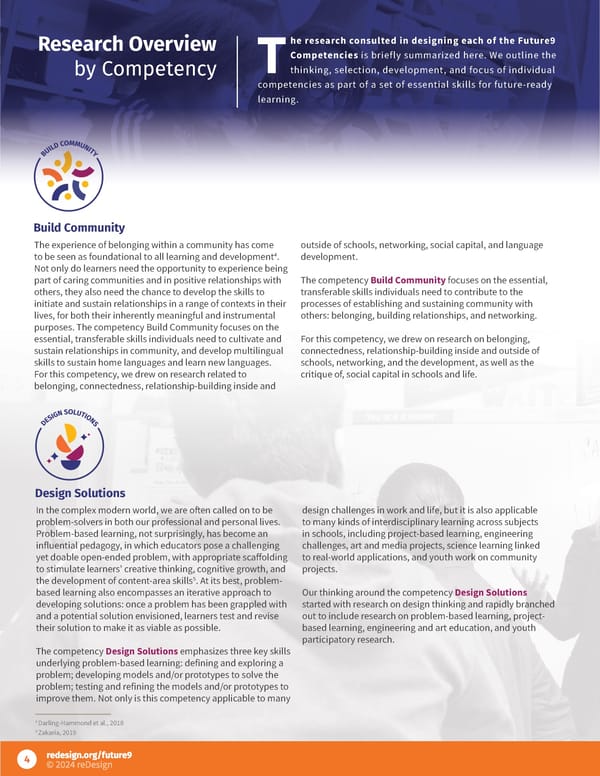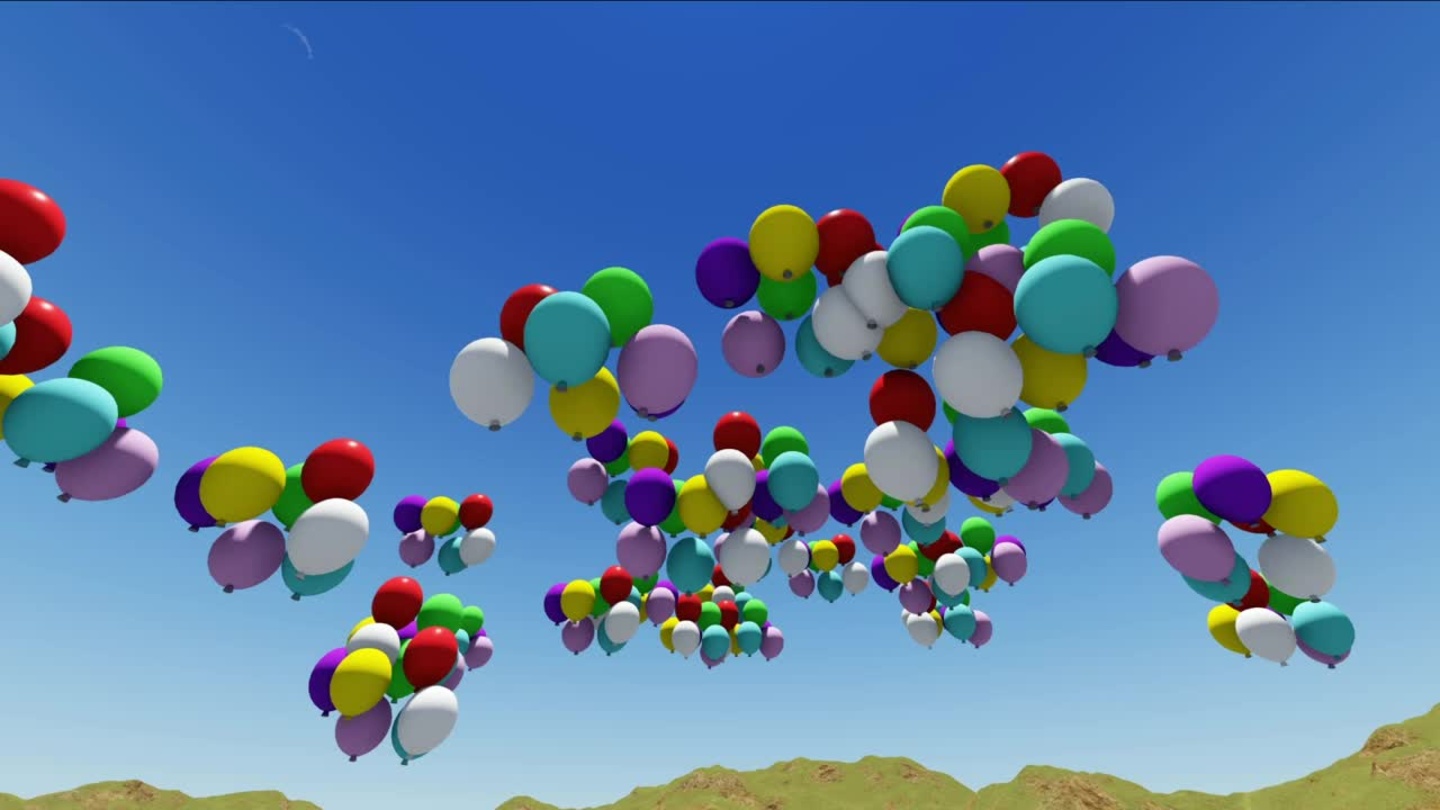Research Overview he research consulted in designing each of the Future9 Competencies is briefly summarized here. We outline the by Competency Tthinking, selection, development, and focus of individual competencies as part of a set of essential skills for future-ready learning. Build Community The experience of belonging within a community has come outside of schools, networking, social capital, and language 4 to be seen as foundational to all learning and development . development. Not only do learners need the opportunity to experience being part of caring communities and in positive relationships with The competency Build Community focuses on the essential, others, they also need the chance to develop the skills to transferable skills individuals need to contribute to the initiate and sustain relationships in a range of contexts in their processes of establishing and sustaining community with lives, for both their inherently meaningful and instrumental others: belonging, building relationships, and networking. purposes. The competency Build Community focuses on the essential, transferable skills individuals need to cultivate and For this competency, we drew on research on belonging, sustain relationships in community, and develop multilingual connectedness, relationship-building inside and outside of skills to sustain home languages and learn new languages. schools, networking, and the development, as well as the For this competency, we drew on research related to critique of, social capital in schools and life. belonging, connectedness, relationship-building inside and Design Solutions In the complex modern world, we are o昀琀en called on to be design challenges in work and life, but it is also applicable problem-solvers in both our professional and personal lives. to many kinds of interdisciplinary learning across subjects Problem-based learning, not surprisingly, has become an in schools, including project-based learning, engineering influential pedagogy, in which educators pose a challenging challenges, art and media projects, science learning linked yet doable open-ended problem, with appropriate sca昀昀olding to real-world applications, and youth work on community to stimulate learners’ creative thinking, cognitive growth, and projects. 5 the development of content-area skills . At its best, problem- based learning also encompasses an iterative approach to Our thinking around the competency Design Solutions developing solutions: once a problem has been grappled with started with research on design thinking and rapidly branched and a potential solution envisioned, learners test and revise out to include research on problem-based learning, project- their solution to make it as viable as possible. based learning, engineering and art education, and youth participatory research. The competency Design Solutions emphasizes three key skills underlying problem-based learning: defining and exploring a problem; developing models and/or prototypes to solve the problem; testing and refining the models and/or prototypes to improve them. Not only is this competency applicable to many 4 Darling-Hammond et al., 2018 5 Zakaria, 2019 4
 Dig into the Why Page 3 Page 5
Dig into the Why Page 3 Page 5
